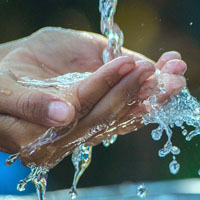Metalliferous content of drinking water and sediments in storage tanks of some schools in Erbil city, Iraq

Submitted: 31 January 2020
Accepted: 7 August 2020
Published: 19 November 2020
Accepted: 7 August 2020
Abstract Views: 618
PDF: 330
HTML: 6
HTML: 6
Publisher's note
All claims expressed in this article are solely those of the authors and do not necessarily represent those of their affiliated organizations, or those of the publisher, the editors and the reviewers. Any product that may be evaluated in this article or claim that may be made by its manufacturer is not guaranteed or endorsed by the publisher.
All claims expressed in this article are solely those of the authors and do not necessarily represent those of their affiliated organizations, or those of the publisher, the editors and the reviewers. Any product that may be evaluated in this article or claim that may be made by its manufacturer is not guaranteed or endorsed by the publisher.
Similar Articles
- Rossana Roila, Arianna Piersanti, Andrea Valiani, David Ranucci, Tamara Tavoloni, Arianna Stramenga, Francesco Griffoni, Lucia Pittura, Stefania Gorbi, Raffaella Franceschini, Francesco Agnetti, Giuseppe Palma, Raffaella Branciari, Carassius auratus as a bioindicator of the health status of Lake Trasimeno and risk assessment for consumers , Italian Journal of Food Safety: Vol. 12 No. 3 (2023)
You may also start an advanced similarity search for this article.

 https://doi.org/10.4081/ijfs.2020.8862
https://doi.org/10.4081/ijfs.2020.8862



